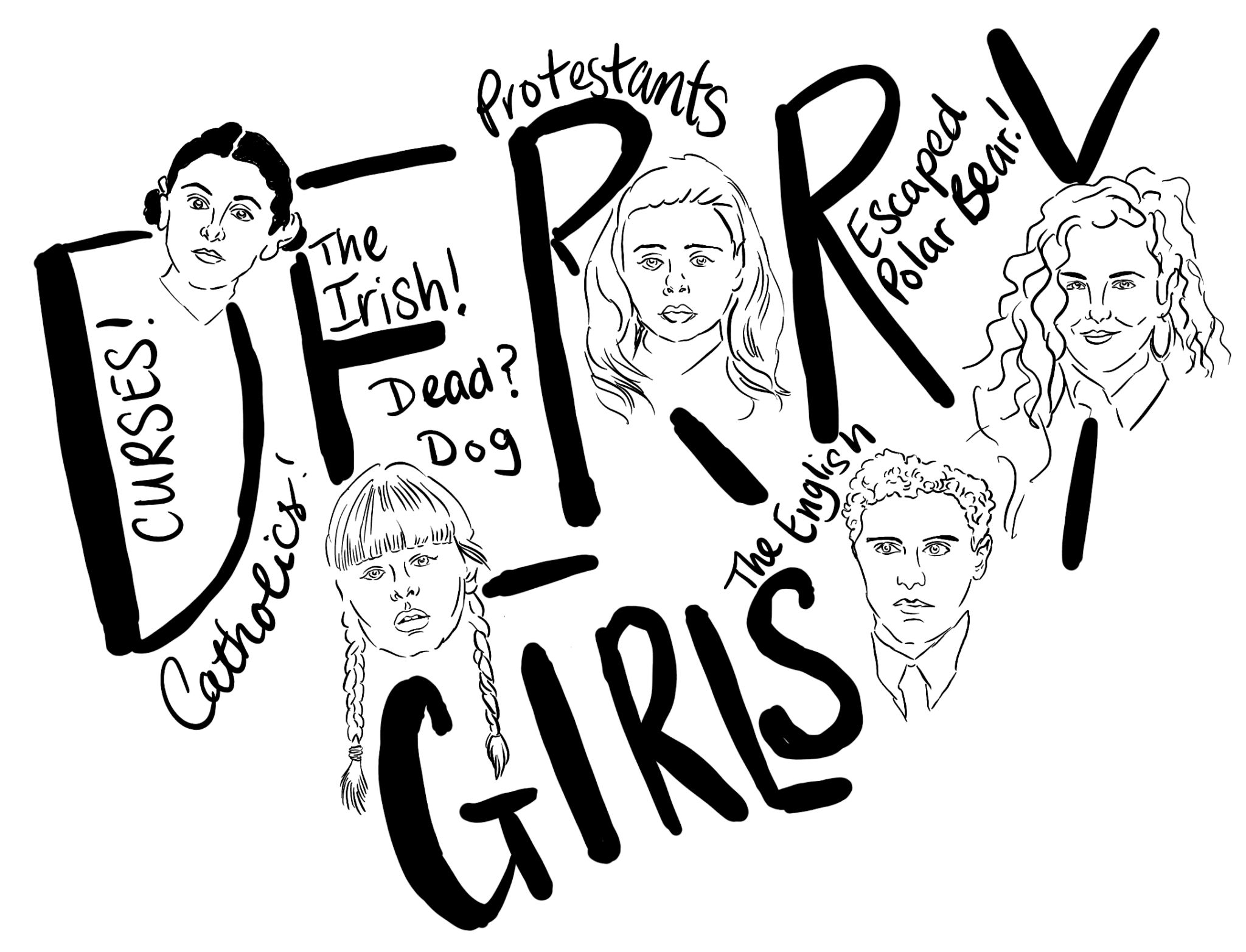
Ashley Anthony
Derry Girls” brilliantly documents the hilarious trials of growing up through the eyes of four young women (and one out-of-place boy) living in Ireland during the Troubles. The show manages to be truthful in that it doesn’t let terror overwhelm every second of the girls’ lives, but it also does not shy away from showing the effects of normalized violence and hatred.
(Unfortunately, though the second season is currently airing in the U.K., this reviewer only had access to the first season on Netflix, and this review will focus solely on that season.)
The first image presented in the first episode is a tank rolling along a bucolic road, passing a group of boys spray painting over the “London” in the “Londonderry” sign at the entrance to the eponymous town. This image is followed by a series of photos of the town: Quaint stone forts covered in moss, everyday people smoking in doorways, military tanks cruising through the streets and a big sign that reads “Welcome to Free Derry.” As we see these images, we hear the voice-over introduction of the main character, Erin, a slightly trite opening until you see that Erin is not, in fact, voicing it, and that her cousin has woken her up by illicitly reading aloud from Erin’s diary.
This scene, and the first scene post-title sequence, introduces the two main conflicts of the series with equal weight: the strife of familial relationships and the tension of the Troubles. The series is careful to never delve too far into the politics of the moment. The family sits around a vintage TV, watching the news show a bridge has just been bombed, and the mother’s first reaction is concern that the ensuing traffic problems will make it more difficult to get her daughter back to school and out of the house.
The politics of violence pervade the series but never overwhelm it, or detract from the funny, feel-good atmosphere. For example, one of the lead girl’s male cousins comes to town, a transplant from London, and is placed in their all-girl Catholic school. This leads to many amusing situations and a lot of mockery, and is only explained in a short exchange when he’s first introduced: His family was afraid to put him in the boys’ school because he had an English accent and they worried for his safety. Similarly, the last moment of the season one is a montage that splices the joy of youth, friendship and fearlessness with a horrific terror attack. The show does not shy away from recognizing the violence of the period, but also does not allow that violence to define the characters’ lives in a beautiful portrayal of resiliency and everyday life under the constant threat of terror.
Saoirse-Monica Jackson, who plays the lead character, Erin, is a standout from her expressions alone: She has one of the most expressive faces I’ve ever seen. Her outraged responses to her family’s antics are hilarious and just dramatic enough to throw the viewer back into the turmoil of being a teenager. Nicola Coughlan, who plays Erin’s best friend Clare, is also a master of the scrunched-up face, and shows a moving range and character arc throughout the first season. Nothing is thrown away in this show: Even the smaller characters, such as Erin’s Grandpa Joe, are hilarious, and show consistency and even, at times, depth. Each short episode has an amusing overarching issue (getting detention on the first day of school, going to a party, or trying to work a new job), but the real story is that of the relationships between the young women as they begin to look for their place in the world during a time of unrest and fear. At times a slapstick comedy, and others a moving portrayal of family, friendship and life under the specter of violence, “Derry Girls” is a series about female strength and the difficulties and joys of growing up.
Carrie Mannino | carrie.mannino@yale.edu .







